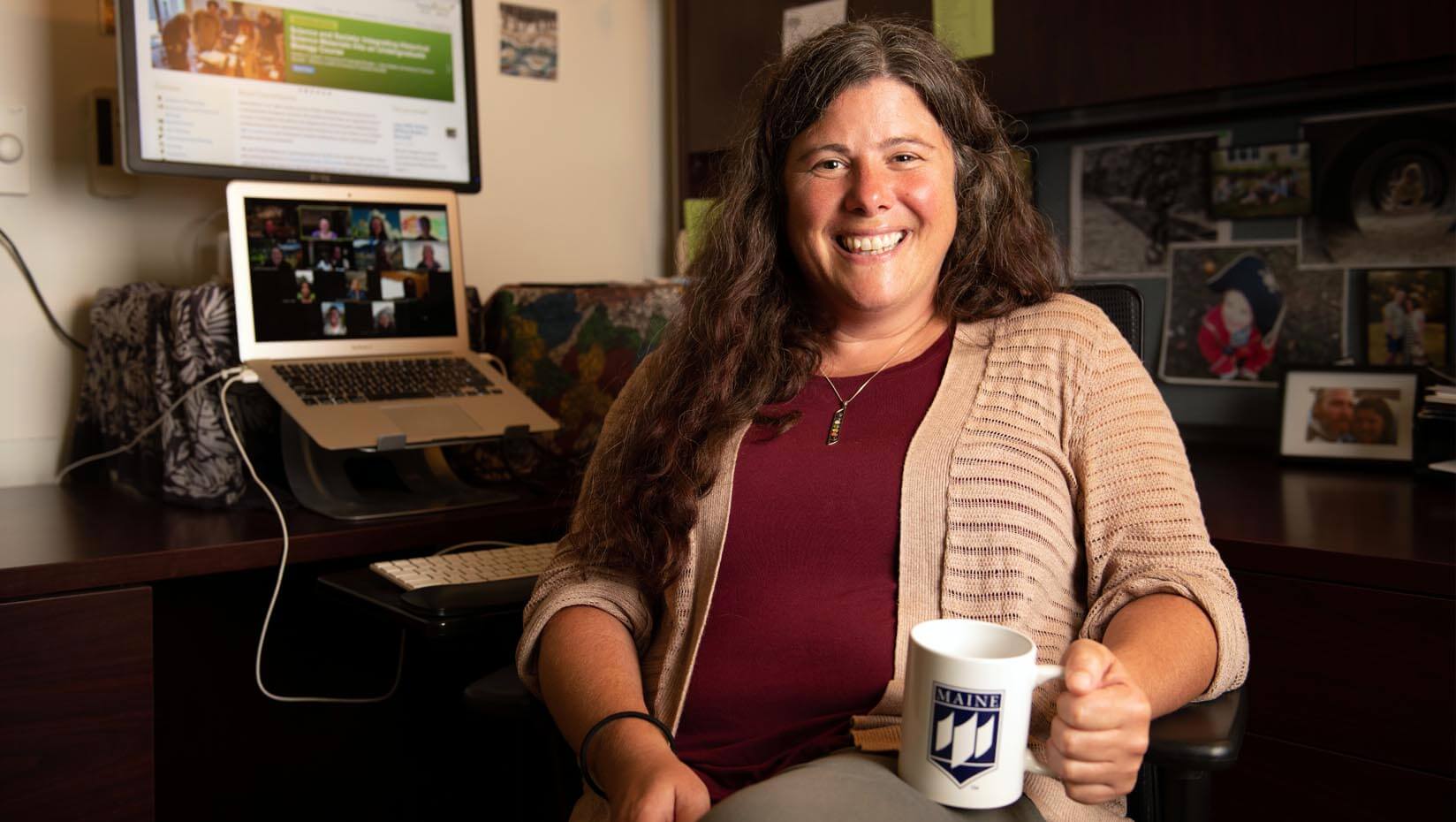
Researchers assess whether open educational resources improved biology instruction
The scientific community’s push to improve undergraduate biology education over the past decade prompted the creation of numerous open educational resources. A group of researchers, including one from the University of Maine, will evaluate how well these materials have met this demand and deliver positive learning outcomes.
The National Science Foundation awarded a nearly $2 million collaborative research grant for principal investigators from the University of Nebraska-Lincoln, Cornell University and UMaine to assess the effectiveness of open educational resources in teaching core biology concepts, facilitating student-centered learning and supporting diversity, equity and inclusion. Funding for the five-year project derived from the NSF’s Vision and Change Program.
Principal investigators on this project include Brian Couch, an associate professor of biological sciences at the University of Nebraska-Lincoln, which is the lead institution; Michelle Smith, senior associate dean of undergraduate education for the College of Arts and Sciences and associate professor at Cornell University, and Erin Vinson, a researcher with the School of Biology and Ecology and the Maine Center for Research in STEM Education (RiSE Center) at UMaine.
The group’s efforts respond to the goals outlined in a 2011 report from the American Association for the Advancement of Science (AAAS) titled “Vision and Change in Undergraduate Biology Education: A Call to Action.” In the report, the AAAS advocates for more student-centered learning, addressing issues of diversity, equity and inclusion, and emphasizing various core concepts, such as evolution and systems, and competencies, including quantitative reasoning and interdisciplinary work, in teaching. The report sparked a movement to implement its principles in undergraduate biology instruction, researchers say.
To help achieve these goals, the society called for more open educational resources, resulting in an abundance of predominantly free and publicly available lesson plans, activities, labs, quizzes and other educational materials. While these resources can prove useful, Vinson and her colleagues say their ability to teach core concepts and encourage more active learning can vary, particularly when instructors deviate from the plans. The group seeks to evaluate how well these open educational resources have met the goals outlined in the AAAS’s report.
“The Vision and Change report called for biology instructors to use student-centered teaching approaches to facilitate student understanding of core concepts and competencies,” says Vinson. “Publishers of open educational resources have answered that call by providing high quality and vetted active learning materials aligned with Vision and Change core concepts.”
Each researcher has experience with the production of open educational resources. They all have been involved with managing CourseSource, an online journal that publishes peer-reviewed articles detailing student-centered, evidence-based biology and physics lessons, which include all necessary open educational resource materials required to teach each lesson.
Vinson serves as managing editor of CourseSource, while Couch is a senior editor. Smith previously oversaw the journal as its editor-in-chief. They will rely on the peer-reviewed journal and its resources to help conduct their study.
“This project can improve open educational resources from CourseSource and other journals by identifying existing gaps in the resources available to address the recommendations set forth from Vision and Change and by encouraging the biology education community to develop and share those resources,” says Couch.
The team will conduct a scoping review of articles containing open educational resources from various biology journals, including CourseSource, to determine how well they achieve the goals of the 2011 AAAS report. Part of their assessment will involve comparing these articles to ones that predate the report, which should illustrate how open educational resources for undergraduate biology have changed over time.
Researchers will then ask instructors who use CourseSource about how they have modified its lessons and activities for their classes. They also will ask CourseSource contributors how they constructed lesson plans and ways their institutions reward them for providing open educational resources. All participants will be asked how the principles from AAAS’s report influence their actions.
Finally, the group will task multiple instructors with using selected open educational resources from CourseSource, observe how each one implements the materials and adapt them to their classes through recordings and course artifacts, and administer assessments to their students before and after the lessons. The analysis, according to researchers, will demonstrate the different ways educators use open educational resources and the extent of which they align with the objectives outlined in AAAS’ report. Researchers also will leverage their findings through the project’s broader impacts — working with groups of instructors from diverse institutions who will meet regularly in professional learning communities called Faculty Mentoring Networks. The network fellows will identify and enact strategies for the OER sharing process to increasingly promote Vision & Change principles in undergraduate biology education.
“We envision that this project will serve as a critical step to transforming the open educational resources movement in biology education from a distributed effort to a more coordinated community activity, with instructors from diverse institutions getting involved,” says Vinson.
Contact: Marcus Wolf; 207.581.3721; marcus.wolf@maine.edu
